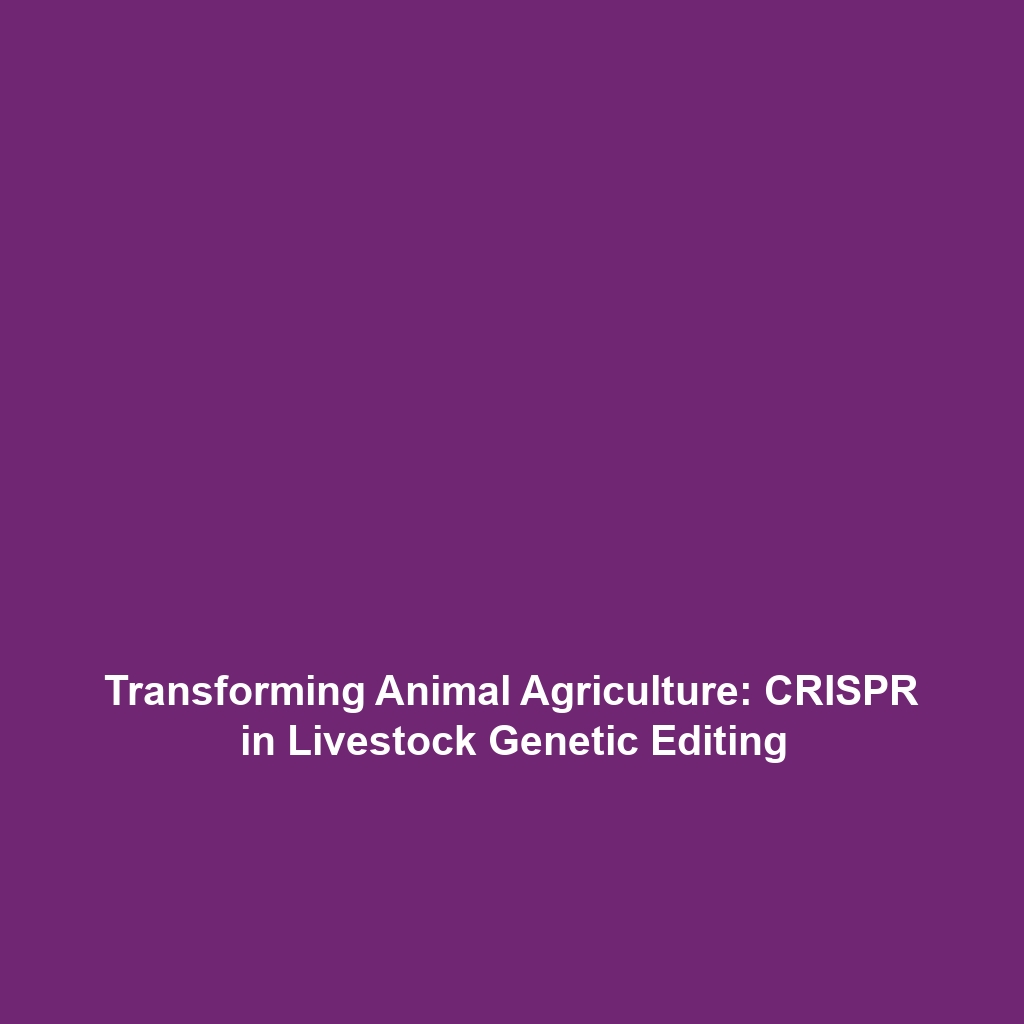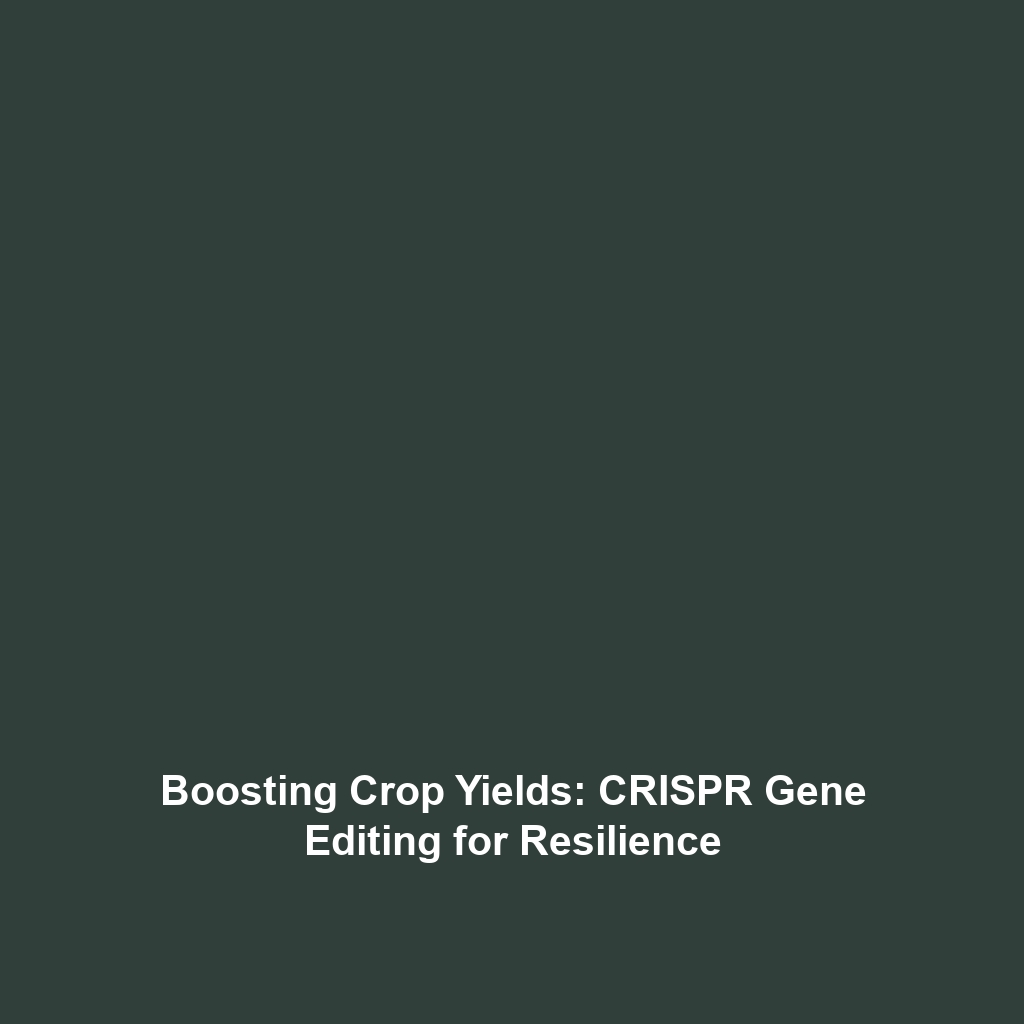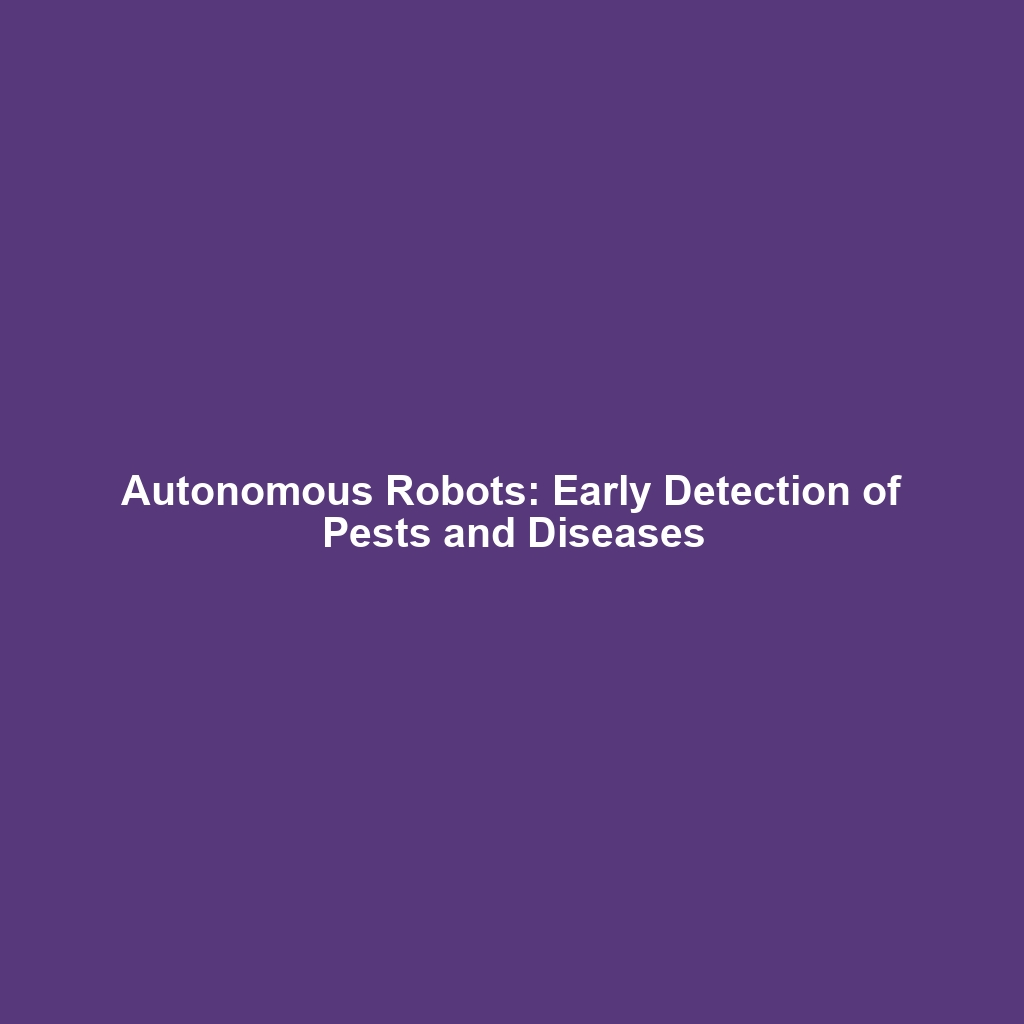Livestock Genetic Editing: Applications of CRISPR in Animal Agriculture
Introduction
Livestock genetic editing has emerged as a groundbreaking application of CRISPR gene editing technology, revolutionizing animal agriculture. This innovative biotechnology offers the potential to enhance livestock health, improve meat and milk production, and create diseases resistant breeds. By significantly altering the genetic landscape of livestock, CRISPR enables farmers to address pressing challenges in food security and sustainability. Understanding the applications of CRISPR in livestock genetic editing is essential for realizing the future of efficient animal husbandry.
Key Concepts
Understanding CRISPR in Animal Agriculture
CRISPR, which stands for Clustered Regularly Interspaced Short Palindromic Repeats, is a powerful tool that allows scientists to edit genomes with high precision. In the context of livestock genetic editing, it entails the targeted alteration of DNA sequences to enhance desirable traits in animals.
Significance within CRISPR Gene Editing
This technology integrates several critical concepts:
- Precision: CRISPR enables precise editing of genes, reducing the risk of unintended mutations.
- Efficiency: Compared to traditional breeding methods, CRISPR significantly accelerates the development of improved livestock.
- Ethical Considerations: The application raises ethical questions regarding genetic modifications in animals.
Applications and Real-World Uses
The applications of Livestock Genetic Editing using CRISPR are diverse and impactful:
- Disease Resistance: CRISPR is used to create livestock that is resistant to diseases such as porcine reproductive and respiratory syndrome (PRRS).
- Enhanced Productivity: Genetic modifications can increase milk yield in dairy cows and growth rates in meat production.
- Improved Feed Efficiency: CRISPR enhances traits that lead to better feed conversion ratios, benefiting the environment and economies.
These practical uses elucidate how CRISPR gene editing is transforming livestock farming and optimizing production.
Current Challenges
Despite its promising potential, there are several challenges of CRISPR in livestock genetic editing:
- Regulatory Hurdles: Navigating the complex regulatory landscape is a significant barrier to the commercialization of genetically edited livestock.
- Public Perception: Acceptance of CRISPR technology among consumers can vary, influencing market viability.
- Ethical Concerns: There are ongoing debates regarding the morality of genetic modifications in animals.
Future Research and Innovations
Looking ahead, the future of Livestock Genetic Editing promises exciting innovations:
- Next-Generation CRISPR Technologies: Breakthroughs such as base editing and prime editing could provide even greater accuracy in gene modifications.
- Increased Collaboration: Partnerships between biotechnologists and farmers are expected to enhance research efforts.
- Sustainability Initiatives: Research is increasingly focusing on how CRISPR can contribute to sustainable agricultural practices.
Conclusion
In summary, livestock genetic editing via CRISPR holds transformative potential for animal agriculture. By enhancing disease resistance, productivity, and efficiency, CRISPR gene editing can significantly impact global food security. As research continues and challenges are addressed, the agricultural sector can expect to see advancements that redefine livestock farming. For those interested in diving deeper into the applications of CRISPR in other areas, consider exploring our sections on plant genetic editing and biomedical innovations.






